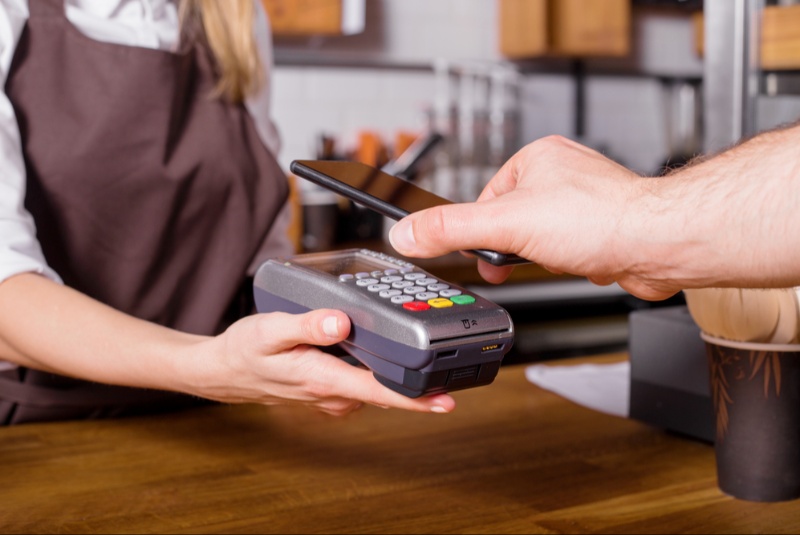In today's rapidly evolving digital landscape, the use of digital wallets and contactless payments has become increasingly prevalent. This comprehensive guide is designed to help families understand the ins and outs of digital wallets, contactless payment methods, and the impact these technologies can have on their daily lives.
1. Introduction to Digital Wallets: Understanding the Basics
Defining Digital Wallets
Understand the concept of digital wallets. A digital wallet is a virtual platform that allows users to store and manage their payment information securely. It serves as a digital counterpart to a physical wallet, enabling transactions through a smartphone, smartwatch, or other compatible devices.
Common Features of Digital Wallets
Explore common features of digital wallets. From storing credit and debit card details to loyalty cards and even boarding passes, digital wallets offer a range of functionalities designed to streamline and simplify everyday transactions.
Supported Devices and Operating Systems
Check supported devices and operating systems. Digital wallets are compatible with various devices, including smartphones, smartwatches, and tablets. However, it's crucial to ensure that your preferred digital wallet is supported by the device and operating system your family uses.
2. Benefits of Digital Wallets: Convenience and Security
Convenience in Transactions
Recognize the convenience of digital transactions. Digital wallets eliminate the need to carry physical cards or cash, allowing for quick and seamless transactions with just a few taps on your device. This can be particularly advantageous for busy families on the go.
Enhanced Security Features
Appreciate the enhanced security features of digital wallets. Many digital wallet platforms incorporate advanced security measures, such as biometric authentication (fingerprint or facial recognition) and tokenization, which replace sensitive card details with unique tokens for added protection.
Organized Expense Tracking
Embrace organized expense tracking. Digital wallets often provide features for tracking expenses, making it easier for families to monitor their spending patterns and budget effectively.
3. Types of Digital Wallets: Exploring Options
Mobile Wallets
Explore mobile wallets. Mobile wallets, such as Apple Pay, Google Pay, and Samsung Pay, are among the most widely used digital wallet options. They enable users to make payments using their smartphones and other compatible devices.
E-Wallets or Digital Payment Apps
Consider e-wallets or digital payment apps. E-wallets like PayPal, Venmo, and Cash App provide a platform for peer-to-peer transactions, allowing family members to send money, split bills, and share expenses effortlessly.
Cryptocurrency Wallets
Learn about cryptocurrency wallets. For families interested in cryptocurrency, specialized wallets like Coinbase or Trust Wallet facilitate the storage and management of digital assets such as Bitcoin and Ethereum.
4. Contactless Payments: The Evolution of Transaction Methods
Understanding Contactless Payments
Understand the concept of contactless payments. Contactless payments use near-field communication (NFC) technology to enable secure and swift transactions by tapping or waving a contactless-enabled card or device near a compatible terminal.
Contactless Cards
Explore the use of contactless cards. Many banks issue contactless debit or credit cards, allowing users to make payments without physical contact with the card reader. Families can request these cards when renewing or applying for new cards.
Smartwatches and Wearables for Payments
Discover the convenience of smartwatches and wearables. Some digital wallets and financial institutions support payments through smartwatches and wearables, providing an additional layer of flexibility for families who prefer these devices.

5. Setting Up and Securing Digital Wallets: A Step-by-Step Guide
Choosing a Digital Wallet
Start by choosing a digital wallet. Depending on your family's preferences and device compatibility, select a digital wallet that aligns with your needs. Consider factors such as supported cards, security features, and user interface.
Linking Cards and Accounts
Link cards and accounts securely. Follow the steps provided by your chosen digital wallet to link your credit, debit, or prepaid cards. Some wallets may also allow you to link your bank account for added functionality.
Enabling Security Measures
Enable security measures. Activate any available security features, such as biometric authentication or PIN protection, to enhance the safety of your digital wallet. Regularly update passwords and enable two-factor authentication when available.
6. Family-Friendly Strategies: Implementing Digital Wallets Responsibly
Setting Spending Limits for Family Members
Establish spending limits. For families using shared digital wallets or financial apps, consider setting spending limits for individual family members. This ensures responsible usage and prevents overspending.
Teaching Children about Digital Transactions
Educate children about digital transactions. As digital natives, children may encounter digital wallets early on. Take the opportunity to teach them about responsible financial habits, including using digital wallets securely and understanding transaction processes.
Regularly Monitoring Transactions
Monitor transactions regularly. Stay proactive in reviewing transactions within your digital wallet or banking app. Regularly checking statements helps identify any unauthorized or unusual activity promptly.
7. Potential Drawbacks: Addressing Concerns
Limited Merchant Acceptance
Acknowledge limited merchant acceptance. While digital wallets and contactless payments are becoming more widespread, some smaller businesses may still have limited acceptance. Familiarize yourself with merchants that support these payment methods.
Dependency on Technology
Consider the dependency on technology. Relying solely on digital wallets may pose challenges in areas with limited internet connectivity or in emergencies. Families should maintain a balance and keep a reasonable amount of physical currency for contingencies.
Privacy Concerns and Data Security
Address privacy concerns. Understand the privacy policies of the chosen digital wallet and ensure that your family's personal and financial information is handled securely. Review and adjust privacy settings as needed.
Embracing the Future of Transactions Responsibly
The adoption of digital wallets and contactless payments represents a significant shift in how families manage their finances. By understanding the basics, exploring the benefits, and implementing responsible strategies, families can navigate the evolving landscape of digital transactions with confidence. Whether using mobile wallets, e-wallets, or contactless cards, the key is to embrace the convenience while remaining vigilant about security and privacy. As technology continues to shape the way we handle transactions, families can leverage these tools to streamline their financial activities while instilling responsible financial habits in the digital age.




